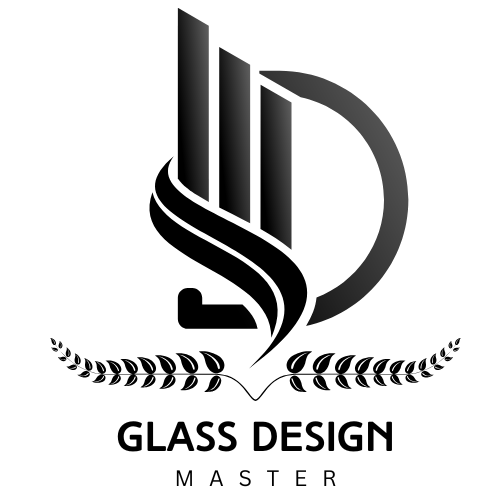Custom glass design is transforming modern architecture and interior spaces, offering a blend of functionality, aesthetic appeal, and personalization. From residential homes to commercial establishments, custom glass elements are being incorporated to enhance light, space, and style.

The Rise of Custom Glass in Modern Design
In recent years, there has been a significant shift towards incorporating custom glass in various design aspects. This trend is driven by the material’s versatility and the desire for unique, personalized spaces. Architects and interior designers are leveraging custom glass to create environments that are both functional and visually appealing.
Types of custom glass design
Here are some common types of custom glass design used in architecture and interior design:
1. Frosted Glass

- Created by sandblasting or acid etching for a translucent, matte finish.
- Ideal for privacy screens, shower enclosures, and office partitions.
2. Etched Glass

- Features intricate designs carved into the glass surface.
- Used for decorative windows, doors, and signage.
3. Stained Glass

- Colored glass pieces arranged in artistic patterns.
- Common in churches, luxury homes, and artistic installations.
4. Tempered Glass
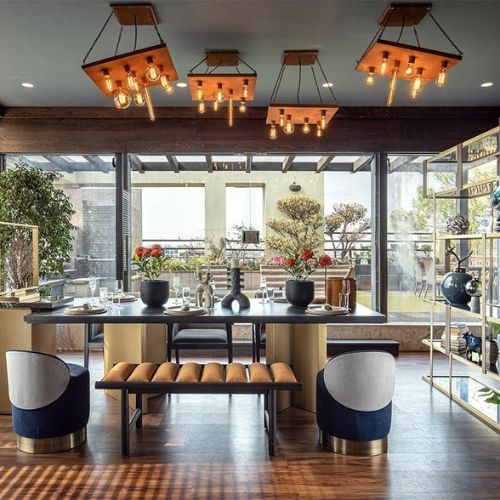
- Heat-treated for extra strength and safety.
- Used for doors, glass railings, and car windows.
5. Laminated Glass
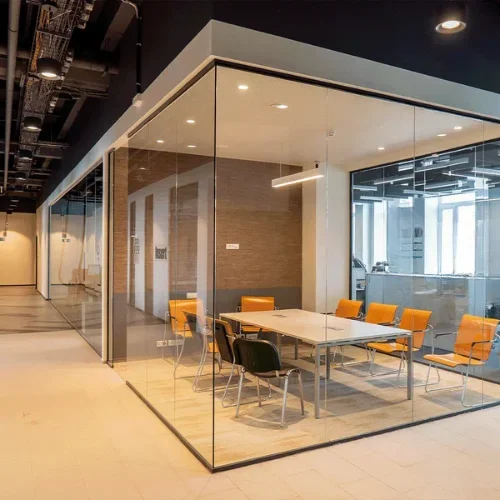
- Two or more glass layers bonded with an interlayer for shatter resistance.
- Ideal for skylights, facades, and security applications.
6. Smart Glass (Switchable Glass)

- Changes opacity from clear to frosted with the push of a button.
- Used in office partitions, high-end homes, and hotels.
7. Tinted Glass

- Glass with color additives to reduce glare and heat absorption.
- Common in windows, skylights, and commercial buildings.
8. Textured Glass

- Features patterns or 3D textures for decorative and privacy purposes.
- Great for cabinet doors, partitions, and decorative walls.
9. Mirrored Glass
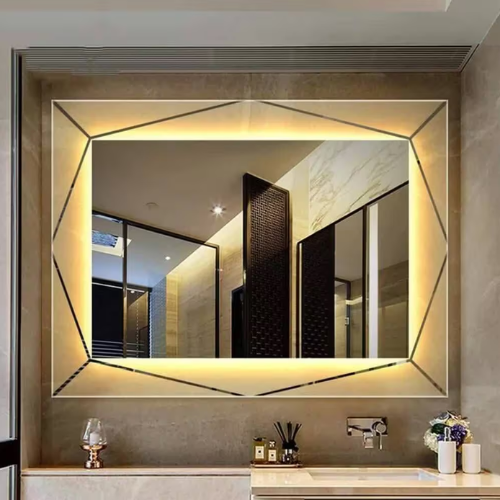
- Reflective glass that provides a mirror effect.
- Used for wardrobe doors, gym walls, and commercial spaces.
10. Back-Painted Glass

- Glass coated with a solid color on one side for a sleek, glossy finish.
- Popular in kitchen backsplashes and wall cladding.
11. Insulated Glass (Double-Glazed Glass)
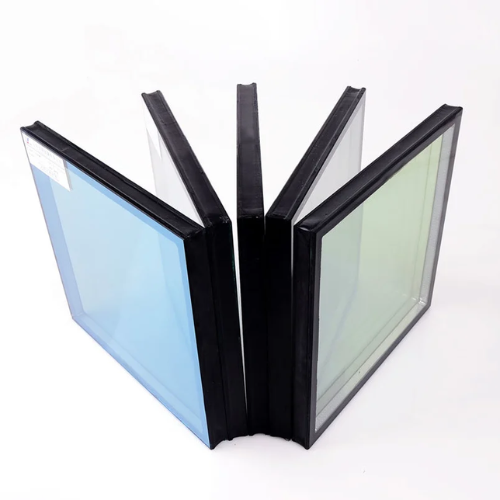
- Two panes of glass separated by a gas-filled space for energy efficiency.
- Used in windows and glass facades for thermal insulation.
Current Trends in Custom Glass Design
- Colored and Tinted Glass Introducing color through tinted or colored glass is a trend that adds vibrancy to spaces. It allows for creative expression and can be used to align with branding in commercial settings or to add personal flair in residential designs.
- Frameless Designs Frameless glass installations are gaining popularity for their minimalist appeal. They provide a seamless look, often used in shower enclosures, railings, and partitions, offering an unobstructed view and a clean aesthetic.
- Decorative and Textured Glass Incorporating decorative elements like etched or textured glass adds character to spaces. These designs can serve both functional and aesthetic purposes, such as providing privacy while allowing light to pass through.
- Smart Glass Technology Smart glass, which can change its opacity on demand, is becoming a sought-after feature in modern designs. This technology offers privacy when needed and transparency to allow light, controlled via remote or automated systems.
- Large-Scale Glass Installations Expansive glass walls and large windows are trends that continue to dominate, especially in commercial spaces. They create a connection between indoor and outdoor environments, enhancing the sense of space and integrating nature into interior designs.
Benefits of Custom Glass Design
- Enhanced Aesthetics Custom glass installations can elevate the visual appeal of any space. Whether it’s a sleek glass staircase or a decorative glass partition, these elements add a touch of elegance and modernity. The transparency of glass allows for unobstructed views, creating a sense of openness and continuity within interiors.
- Increased Natural Light One of the standout benefits of using glass is its ability to transmit natural light. By incorporating glass walls, doors, or skylights, spaces become brighter and more inviting, reducing the need for artificial lighting during daylight hours. This not only enhances the ambiance but also contributes to energy efficiency.
- Versatility in Design Glass can be customized in various ways etched, colored, textured, or shaped to fit specific design visions. This versatility allows for creativity and personalization, enabling designers and homeowners to achieve unique aesthetics that align with their preferences.
- Durability and Safety Modern advancements have led to the development of tempered and laminated glass, which are both durable and safe. These types of glass are resistant to shattering and can withstand significant impact, making them suitable for various applications, from flooring to balustrades.
- Sustainability Glass is a sustainable material; it’s recyclable and can contribute to energy efficiency when used in windows and facades. Energy-efficient glass options, such as low-emissivity (Low-E) glass, help in regulating indoor temperatures, thereby reducing heating and cooling costs.
Applications of Custom Glass Design
- Residential Spaces: Custom glass is used in homes for shower enclosures, kitchen backsplashes, railings, and even flooring. These applications not only enhance aesthetics but also add value to the property.
- Commercial Spaces: In offices and retail environments, glass is utilized for partitions, storefronts, and display cases. It creates an open and inviting atmosphere, essential for customer engagement and employee well-being.
- Hospitality Industry: Hotels and restaurants incorporate custom glass in various forms, from decorative panels to functional elements like glass doors and windows, to create an upscale and modern ambiance.
Conclusion
Custom glass design offers a multitude of benefits, from enhancing aesthetic appeal to improving functionality and sustainability. Its versatility makes it a preferred choice in both residential and commercial settings. As trends continue to evolve, incorporating custom glass elements can lead to innovative and personalized spaces that stand the test of time.
FAQ
- What is custom glass design?
Custom glass design refers to the process of tailoring glass elements to fit specific architectural or interior design needs. It includes various types of glass, such as frosted, etched, stained, and smart glass, used for aesthetics, privacy, and functionality. - What are the benefits of using custom glass in interior design?
Custom glass enhances aesthetics, increases natural light, provides design versatility, ensures durability and safety, and promotes sustainability. It also helps create a sense of openness and modern elegance in any space. - Where is custom glass commonly used?
Custom glass is widely used in residential spaces (shower enclosures, kitchen backsplashes, railings), commercial buildings (storefronts, partitions, display cases), and the hospitality industry (hotels, restaurants, decorative panels). - What is the difference between tempered and laminated glass?
Tempered glass is heat-treated for extra strength and shatter resistance, while laminated glass consists of multiple layers bonded together for added security. Laminated glass is commonly used for skylights and facades, whereas tempered glass is used for doors and railings. - What are the latest trends in custom glass design?
Popular trends include frameless glass installations, smart glass technology, large-scale glass walls, colored and tinted glass, and textured decorative glass. These trends focus on modern aesthetics, privacy control, and energy efficiency.
